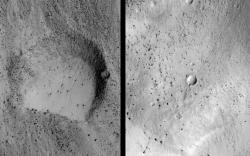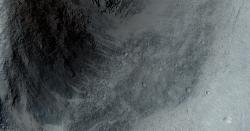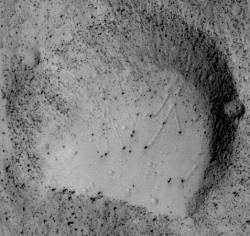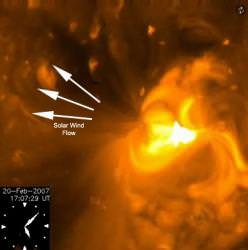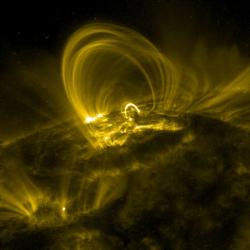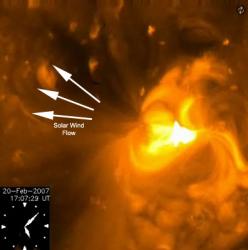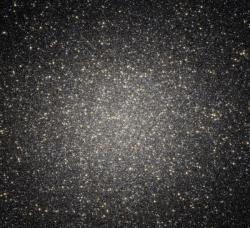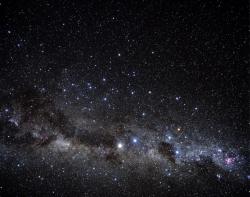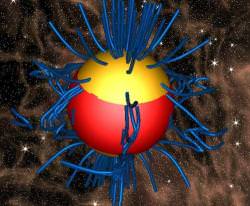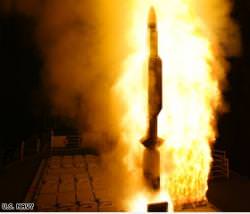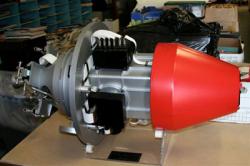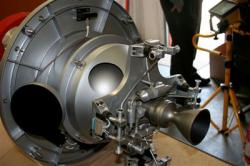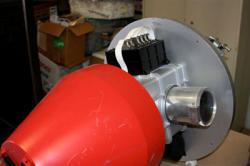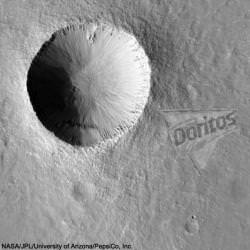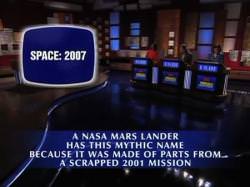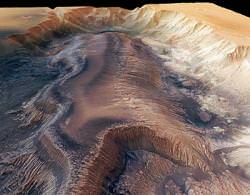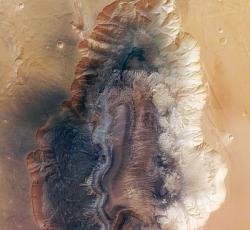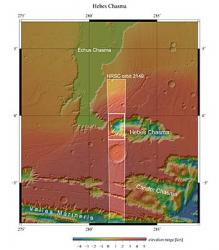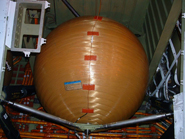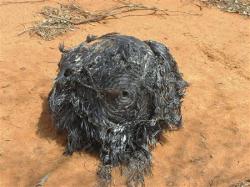NOTE: This was the Universe Today’s contribution to April Fools Day (April 1st), but it isn’t all a joke… International efforts in space are being seriously hindered by budget cuts, forcing agencies to think up alternative methods to raise money. The following article could be a possibility…
In an effort to raise additional funds, NASA has announced new partnerships with corporate sponsors. It is becoming increasingly difficult for government-backed space agencies to support the vast range of missions currently exploring the solar system, so urgent measures are being taken. Planetary missions in particular, such as the Mars Exploration Rover project, have fallen on tough times. As already demonstrated by research groups in the UK, funds from private companies are essential for survival and some weird and wonderful methods to capture public interest have already been exploited.
Now it is the perfect time for the biggest marketing stunt yet: tattoo Mars with corporate logos for orbiting spacecraft and ground-based telescopes to observe…
With millions of dollars being injected into the commercial space market, companies such as Virgin Galactic, Astrium and XCOR are all beginning to dominate the fledgling space flight industry. Where government space agencies such as NASA and ESA have spearheaded technological advancement, the void left behind is slowly being filled by space tourism companies all competing for short trips into space and, eventually, tours to the Moon with the prospect of Mars in a few decades time.
But what about all the robotic missions exploring the solar system now? Who pays for them? Well, that is up to government funding and initiatives. As recently highlighted by the UK’s £80 million ($160 million) research budget shortfall, and the attempt to cut $4 million from the NASA Mars rovers, there appears to be international pressure on government-funded groups to think “out of the box” where money is concerned. After all, scientific research (on the whole) is not political, but scientific funding is.
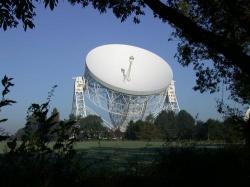
So, in an unprecedented move, UK astronomers carried out an unorthodox measure and transmitted Doritos ads into space to help fund the beleaguered Jodrell Bank Telescope in Cheshire currently under threat from closure due to funding cuts. This might sound silly, but the undisclosed advertising revenue was much needed.
Although there is a slim-to-no-chance of aliens picking up the interstellar ad, NASA was obviously paying attention. Today, the space agency has announced an offbeat plan of their own: to burn sponsor logos into the surface of Mars. It’s not quite as reckless as it sounds, but existing technology on board the Mars Reconnaissance Orbiter (MRO) will be used to etch sponsor logos into the top layers of the Martian regolith. The stunt is expected to have minimal effect on the planet, as winds and dust storms will erase the ads within a couple of sols (Martian days).
“Just think, 3 years ago, we wouldn’t have the optical capabilities to spot an advertisement from orbit. But now, with the Mars Reconnaissance Orbiter, and its ability to resolve objects as small as half a meter, we’ll be able to see our sponsors ads clearly etched into the Martian surface.” – Dr. Francis Rae, NASA Outreach Spokeswoman.
The MRO has a laser-ranging instrument on board that usually takes highly accurate measurements of landscape features. Scientists have modified the laser to emit a higher powered beam so small areas of Martian regolith can be fused together. It is expected to use the surplus power available from the ultra-efficient solar panels on the satellite. After a few orbits, corporate logos and other ads may be constructed, creating logos spanning small 5×5 meter areas of Mars plains and crater bottoms. Of course, the logos created will be crude, and will only be available in shades of red, but the marketing and psychological impact will be huge. It is hoped the advertising revenue will follow suit.
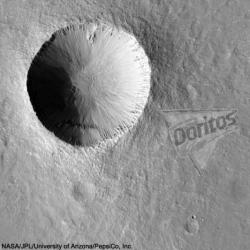
This is only for starters. If all goes well, huge areas of the surface may be used, possibly allowing Earth-observable logos. Doritos, famed with the UK’s ad transmission into space, has already backed NASA’s plans and fully intends to support any marketing campaign carried out by the robotic explorers. An excerpt from a Pepsi Co, Inc. statement reads, “…the Doritos snack division of our corporation is always looking for new and novel ways to promote our products, branding an alien planet with our logo will not only be historic, it will revolutionize product marketing.” They add at the bottom of the press release, “Besides, it will be very cool.” An artists impression of a huge Doritos logo next to a crater observed by the MRO (HiRISE instrument) has also been released (pictured).
Other Mars missions are now being evaluated for their potential marketing skills, and an obvious mission that comes to mind are the Mars rovers, Spirit and Opportunity. Easier than tattooing the planet from orbit, the rovers could quickly create tire tracks into shapes that can be observed from space.
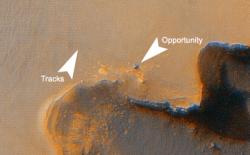
When asked whether the Phoenix lander had any such capability, Rae commented, “I really wish we’d thought that through better.” The lander will only be able to dig crude shapes into the regolith should it be called into fund-raising action. It seems doubtful that sponsors would be interested in this mission which is arriving at the Red Planet in May.
This leads to the question: Will a NASA mission be measured more for its revenue building ability, or for its scientific merit? “I doubt it will come to that, we’re not a private enterprise, science is our priority,” Rae added.
Other marketing tools are at mission planners’ fingertips. Some fun options include:
- Physically moving rocks around the Martian landscape by future advanced rovers to assemble messages, take photos and send them back to Earth – the ultimate personal postcard message!
- The future of terraforming the planet could include growing lichen in the shape of sponsor logos (imagine how much Pizza Hut would pay to have the very first life on Mars growing in the shape of their hut logo!)
- Send a personal item on a Mars-bound mission and get the lander to place it on the planet, take a photo and pay for the pleasure of seeing something you own in the Martian dirt! Just don’t expect it back… (An orbital version has already been done by Bigalow Aerospace…)
Source: NASA Press Release
